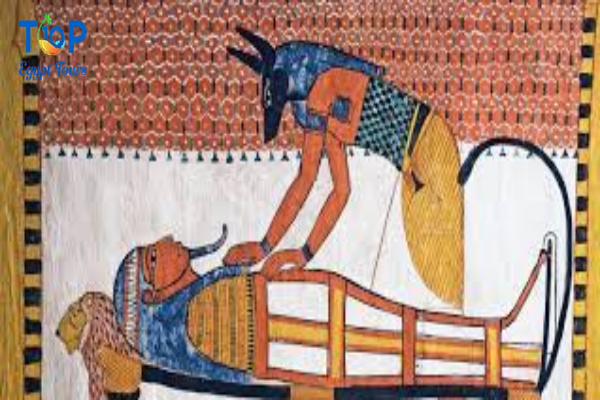Mummification Rituals And Funerary Festivals, Welcome to the captivating world of Ancient Egyptian rituals and festivals, where tradition and mystique come together in a mesmerizing blend. In this installment of our series on Ancient Egyptian Festivals and Rituals, we delve into the intriguing realm of Mummification Rituals – a cornerstone of ancient Egyptian belief and practice.
The ancient Egyptians were interested in death since the dawn of history, and they imagined it as a stage of life, and everything and the goal of every thought was for the deceased to achieve a new life that would guarantee him a peaceful eternity, starting with the construction of his tomb or the house of eternity and the inscriptions on its walls, and his embalming to ensure the preservation of his body and features, and holding special funeral rites. And reading texts and prayers, leading to resurrection and immortality.
Mummification Rituals And Funerary Festivals
“Secrets of mummification”
The presence of “natural” mummies, due to environmental conditions and the dry soil of Egypt, and the development of religious thought, perceptions of the other world, and the doctrine of resurrection and immortality, provided an opportunity for the Egyptians that prompted them to think about the possibility of preserving the body from decomposition, to preserve the material and moral components of the human being, so that the soul could inhabit it again as one of the components of resurrection and eternity.
The practice of mummification ensures for the deceased the preservation of the body, and guarantees him the possibility of achieving a new life. The Greek historian Herodotus provides a description of the process that boils down to extracting the brain, then the entrails, to remove the biodegradable organs, except for the heart, and finally the process of drying, then washing, and wrapping with tapes saturated with aromatic oils.
The heart, “ib,” was left in the body in its place, connected to its arteries, because it is the source of a person’s thoughts, feelings, and emotions, and it will play a role, according to ancient Egyptian belief, during the trial of the deceased, for the continuation of life.
Mummification was limited to kings and dignitaries, and the process was performed on the west bank of the Nile near the tombs.
“Parade of eternity”
The funeral ceremony takes place and is divided into three rituals, the stage of mourning days around the funeral bed, with the screaming and wailing of the specialized mourners, and it lasts the period of mummification, after which the procession sets off towards the shore of the Nile River, carrying the deceased and his belongings, accompanied by members of his family and friends and the mourners of course, then the procession crosses the river. On boats.
Once the procession reaches the other side, it heads in the direction of the cemetery, and the priests perform the required rituals, most notably the “opening the mouth” ritual, which aims to stimulate the senses of the deceased and restore life to him, according to ancient Egyptian religious thought.
In concluding our exploration of Mummification Rituals and Funerary Festivals, we invite you to embark on a journey through time, where ancient beliefs and practices continue to echo in the monuments and traditions of modern Egypt. Join us in the next installment as we unravel more mysteries surrounding the captivating world of Ancient Egyptian Festivals and Rituals with Top Ten Egypt Tours.



Comment (0)